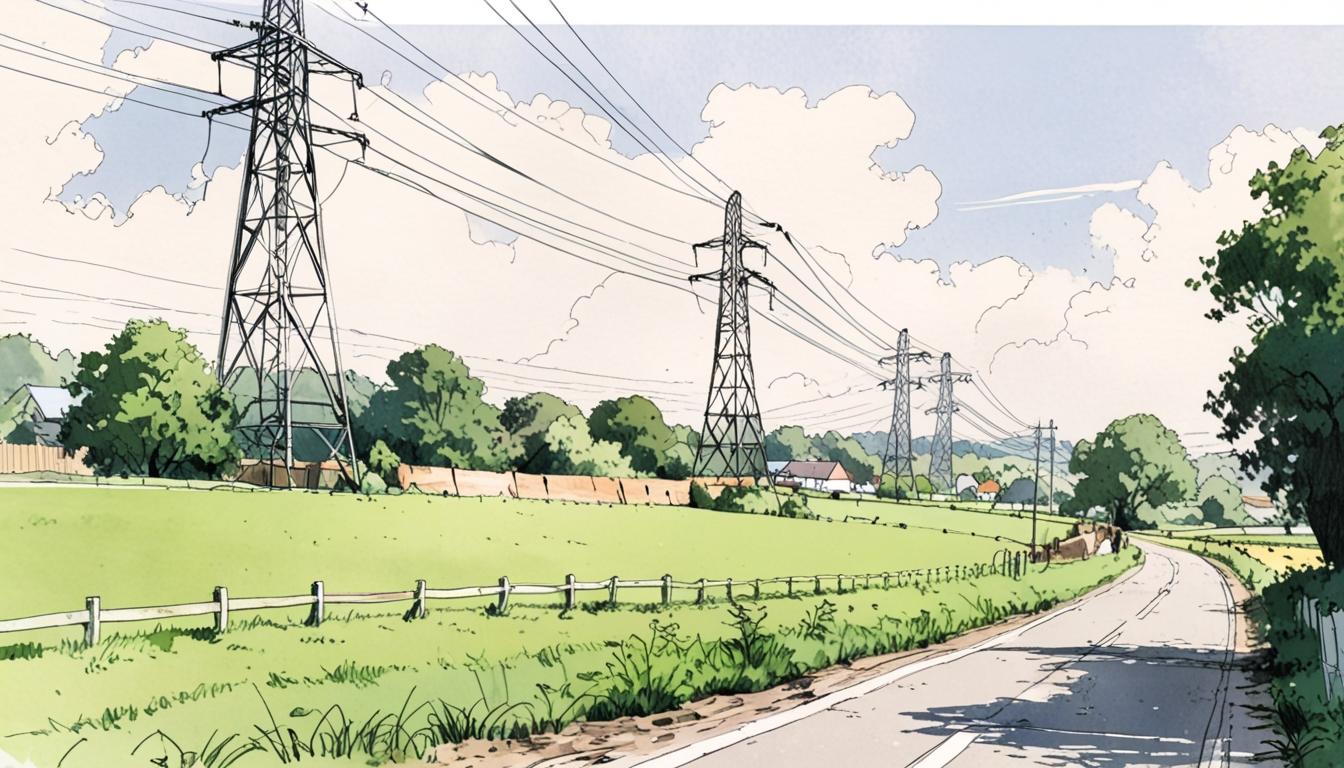The village of Ardleigh in Essex, renowned for its picturesque landscape and tranquil waters, now stands on the brink of an irrevocable transformation. Under the guise of progress, the National Grid’s plans for 160ft electricity pylons and disruptive trenching threaten to mar the countryside that local residents hold dear. This initiative, framed as Britain’s ‘Great Grid Upgrade’, is being pushed forward in response to energy demands that many argue could be addressed through more thoughtful means.
Since its launch in April 2023, this £16 billion project has set a course to create 625 miles of so-called ‘pylon highways’ stretching from Grimsby to Norfolk, significantly altering the identity of countless communities along the way. The specific line that endangers Ardleigh runs from Norwich to Tilbury and has ignited anger among residents who feel sidelined in decisions that impact their futures. The ambitious plans threaten to construct three substations within this historic parish, documented in the Domesday Book, alongside a large interconnector designed primarily for energy export to Europe, raising valid questions about the priorities at play.
Local voices such as Jayne and Bruce Marshall are outraged over the potential loss of up to 80 per cent of their farmland. Gilly and Paul Whittle fear their £1.5 million home may lose half its value, asserting that such repercussions are seldom acknowledged in high-level discussions. Increasingly, communities across the nation are expressing their dissatisfaction with what appears to be a reckless surge towards renewable energy goals, driven more by political aspirations than genuine community welfare. Critics contend that this government approach lacks sensitivity, endangering homes, livelihoods, and the rural landscape cherished by so many.
Notably, Sir Tony Blair has voiced his concern about the implications of these plans, labeling them ill-considered and echoing sentiments shared by many about the lack of meaningful consultation with affected communities. Residents are left questioning why alternative solutions, such as burying the cables, which could save millions while preserving the environment, are not in the conversation. A report highlighting the potential for £600 million in savings by opting for a less invasive approach underscores a critical inadequacy in the government’s current strategy.
Local businesses also feel the weight of this controversy. Robert Blyth, a vineyard owner near the proposed pylons, worries that industrial construction will disrupt the local ecosystem and harm his crops. He raises concerns about the balance of local wildlife and agriculture, while local hubs like the Skylark café, which serves as a vital community point, risk severe repercussions. Owner Matt Wilsher’s lament regarding the lack of consideration for local economies highlights the widespread anxiety felt among entrepreneurs in the area.
As grassroots campaigns like the Essex Suffolk Norfolk Pylons take shape, the call for a more rational approach to electricity supply is gaining momentum. Residents like Gilly Whittle emphasize that no one disputes the necessity for increased electricity. However, they caution against the haste of these plans, which seem driven by an arbitrary political timeline rather than real community needs.
With electricity demand in the UK expected to rise significantly over the coming decades—even projected to increase by 50 per cent within the next five years—the urgency for infrastructure upgrades is clear. However, the current plans demonstrate a disregard for the real impact on local communities, reflecting a troubling trend of top-down decision-making that neglects the voices of those directly affected.
In contrast with other regions see reformative electric grid initiatives amid climate challenges, the UK’s National Grid’s strategy appears increasingly disconnected from grassroots concerns. As the Great Grid Upgrade approaches its scheduled start in Ardleigh in 2027, the persistent discontent and demands for a more thoughtful approach remain palpable.
Ardleigh’s historic charm and natural beauty are hanging in the balance, prompting important questions about the priorities of energy projects and the necessity for genuine community input. As the dialogue unfolds, it serves as a stark reminder of the vital need to balance energy expansion with the preservation of cherished local environments.
Source: Noah Wire Services
